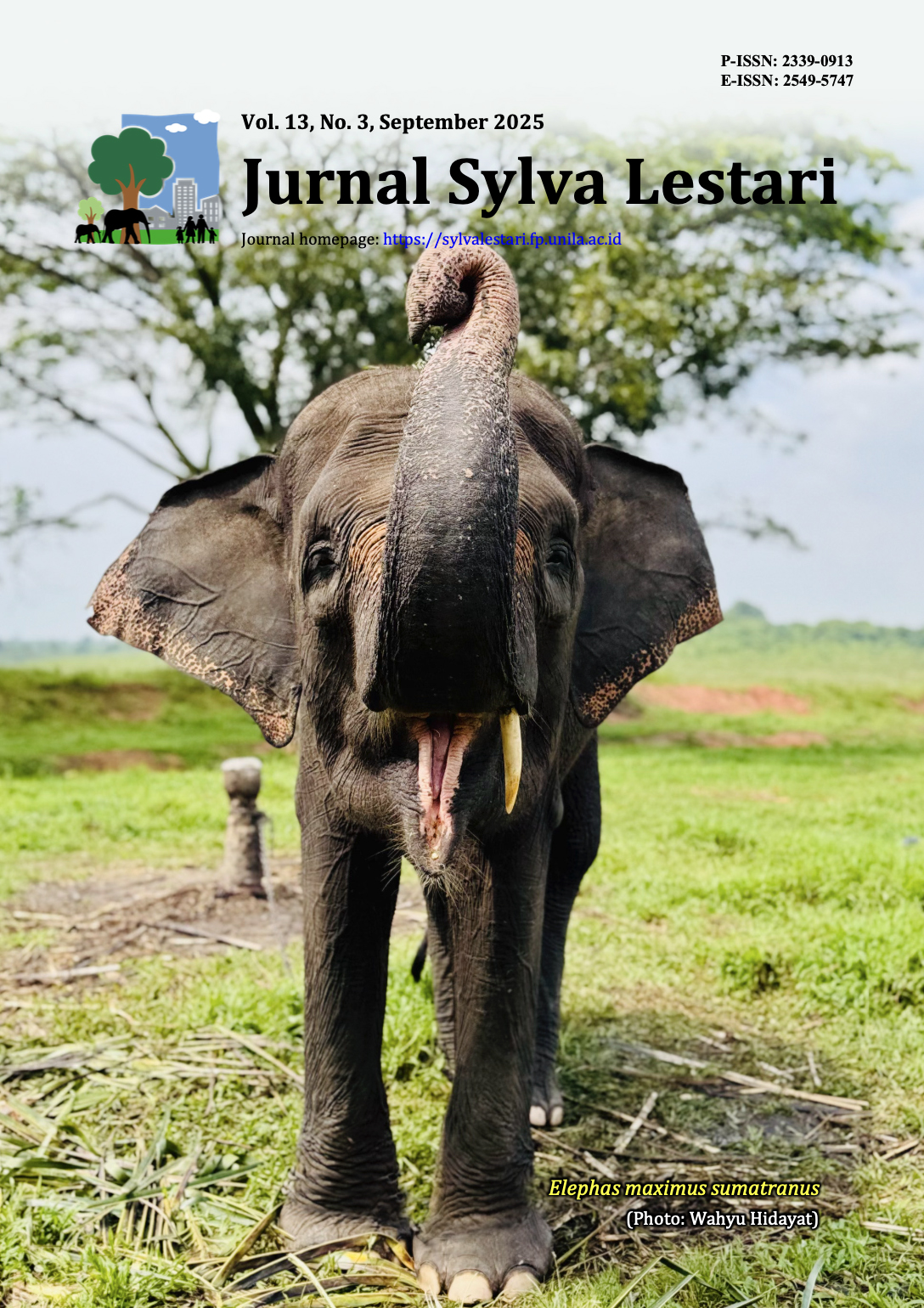Effectiveness of Different Extraction Techniques on the Yield and Antityrosinase Activity of Merbau (Intsia bijuga (Colebr.) Kuntze) Wood Extract
DOI:
https://doi.org/10.23960/jsl.v13i3.1140Abstract
This study employed various extraction techniques to determine the yield, phytochemical profile, and antityrosinase activity of merbau wood (Intsia bijuga (Colebr.) Kuntze) extracts. The extraction techniques consisted of two factors: the type of extraction methods (conventional maceration – CM, ultrasound-assisted extraction – UAE, and magnetic stirrer – MS) and the number of extraction repetitions (first repetition – F1, second repetition – F2, and third repetition – F3). The interaction of the extraction methods and the number of extractions affects the extraction yield, antityrosinase activity, and its phytochemical profile. Merbau wood extracted using the UAE-F1 extraction method resulted in the highest yield (13.38%). In contrast, the UAE-F3 extract showed the strongest antityrosinase activity (IC50 value of 1.548 ppm) and the highest total phenol content (692.86 mg/g AGE). Fourier transform infrared analysis of the F1 extract showed that all samples contained the same functional groups, namely C=C (1600–1475 cm-1) and O-H (3800–3000 cm-1), indicating structural similarity among the extracts. Merbau wood extraction using the UAE method, both in the first, second, and third extractions, produced the highest yield, antityrosinase activity, and total phenol content of the extract compared to the CM and MS extraction methods.
Keywords: antityrosinase activity, Intsia bijuga, maceration, total phenolic content, ultrasound-assisted extraction
Downloads
Downloads
Published
How to Cite
Issue
Section
Statistics
 Abstract views: 521 times
Abstract views: 521 times PDF downloaded: 459 times
PDF downloaded: 459 times
Metrics
License
Copyright (c) 2025 Ratih Afrida Lismana Sari, Rita Kartika Sari, Utami Dyah Safitri, Manggar Arum Aristri, Maeda Wahyuningrum, Muhammad Adly Rahandi Lubis

This work is licensed under a Creative Commons Attribution-NonCommercial 4.0 International License.
Authors retain copyright and grant the journal right of first publication with the work simultaneously licensed under a Creative Commons Attribution-NonCommercial 4.0 Licence that allows others to share the work with an acknowledgement of the work's authorship and initial publication in this journal.
Authors are able to enter into separate, additional contractual arrangements for the non-exclusive distribution of the journal's published version of the work (e.g., post it to an institutional repository or publish it in a book), with an acknowledgement of its initial publication in this journal.
Authors are permitted and encouraged to post their work online (e.g., in institutional repositories or on their website) prior to and during the submission process, as it can lead to productive exchanges, as well as earlier and greater citation of published work (See The Effect of Open Access).









